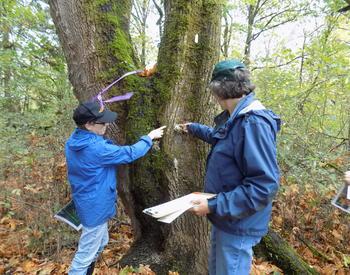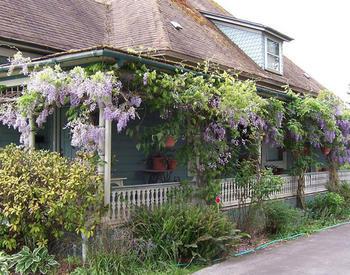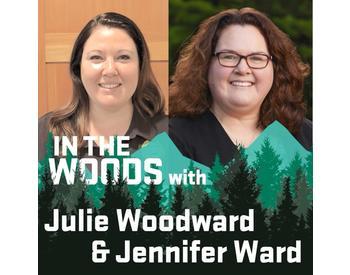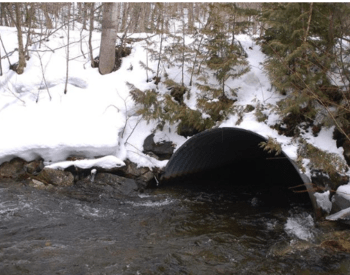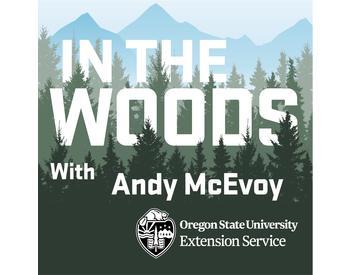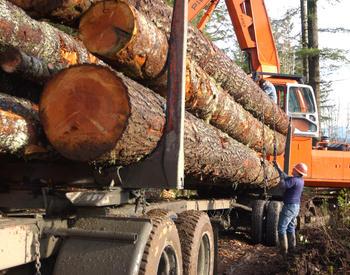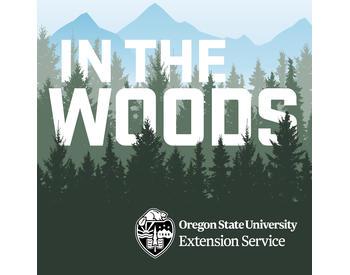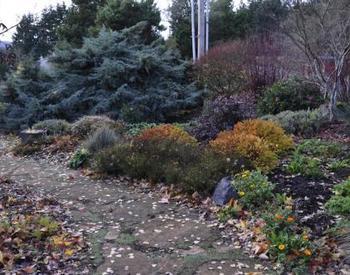If you are planning to plant trees for reforestation, restoration, Christmas trees or other purposes, you probably already know that this is a very challenging time for establishing new trees. Acquiring tree seedlings and getting good help with tree planting was challenging before the 2020 wildfire season. The increase in demand due to the wildfires has added to the problem.
OSU Extension, Oregon Department of Forestry, Oregon Small Woodlands Association, watershed councils and other local partners are working together to address the situation. But it looks like it will take a few years to deal with the backlog in capacity for seedling production and outplanting.
Even before the 2020 fires, a perennial problem with supplying tree seedlings for family forest owners has been the unpredictability of demand and the time frame for seedling orders. The standard advice has been to order seedlings two years in advance. (Our most popular and reliable seedlings have been 2-year old stock, but there is increasing interest in 1-year container seedlings.) But decisions to harvest are often driven by unforeseen events or short-term market opportunities.
Just looking at the annual timber harvest from small woodlands over the last 10 years as an indicator of reforestation needs, you can see that this has fluctuated by a factor of two to three times (see graph). Based on timber harvest rates alone, a rough estimate of demand for seedlings for family forest owners varies from 500,000 to 1,500,000, just in the Clackamas and Marion county areas.
Forest tree nurseries don’t grow many seedlings on speculation anymore, so to meet this demand there usually has to be bulk orders one or two years in advance. Nurseries also don’t want to take orders for less than 10,000 or even 20,000 trees at a time.
Efforts to address the need for seedlings and further assistance
Millions of dollars are coming to help with tree planting for post-fire recovery and other forest restoration in Oregon. A variety of local, state, federal and nonprofit organizations are involved in providing grants, incentives and donated seedlings. But it is taking time to sort out the process for deploying these resources to help people on the ground. And it will take a few years just to get enough seedlings growing in the nurseries.
For anyone in need who does not have an order in, getting your planting plan and joining a local group order for both seedlings and further assistance could be the way to go.
Local working groups have formed in most counties in order to help landowners with planting plans, seedling orders and assistance with site preparation, planting and maintenance if needed. There are some bulk orders for seedlings that went out on speculation that is being connected with those in need. But there are millions more trees to be ordered and it is best for landowners to get their orders in and not rely on finding seedlings or assistance on short notice.
Heat, drought and other stress hazards to seedling establishment
Unfortunately, the first growing season after the 2020 fires has been very challenging due to heat, drought and seedling- or planting-quality issues. Soil surface heat that exceeds 150 degrees near the base of seedlings becomes lethal. After 90 days with no rain, the rather small rooting zone of new seedlings is dried out.
The entire sequence of steps for successful seedling establishment becomes even more important under stressful weather conditions. Seedlings that have been compromised at any step of the way — lifting, handling, storage, planting and weed competition — are the first to suffer or die during extreme drought and heat such as we experienced in 2021.
Decades of research and operational trials helped improve regeneration success under the hot and dry conditions typical in southwest Oregon. Lessons from southwest Oregon are quite applicable here in northwest Oregon since we are seeing more extreme heat and drought.
Recommended practices include:
- Extra attention to protecting seedlings with shade, behind stumps or slash, or with artificial tree shades.
- Preplanting weed control along with post-planting maintenance of lower live weed cover to conserve soil moisture.
- Retaining dead shade and mulch provided by woody and herbaceous weeds that have died.
- Planting species mixtures that include more heat- and drought-tolerant choices.
- Matching both species and stock type to microsite conditions.
- Where soils are deep, use of seedlings with long root systems and deep planting options.
- Where soils are shallow or rocky, use containerized/plug seedlings with high root growth potential.
In addition to planting more heat- and drought-tolerant species that are native to the area, there is increasing consideration of assisted migration of species and seed sources in anticipation of climate stress and climate change. Stay tuned for more discussion of this as forest geneticists develop climate-based seed zones and guidelines for Oregon.
Comprehensive reforestation strategy for Oregon
Fire-affected landowners are facing a sudden, unexpected need for planting trees, often times with little past experience. This is an urgent situation about which they had no choice. But of course, the strain on supply and service providers caused by post-fire needs also impacts anyone else looking for seedlings and services.
Some people are choosing to delay harvest and planting due to supply issues. But there is also the need to provide for people who were having trouble getting what they needed before the fires and for others who have a strong need to harvest and replant.
There is a comprehensive effort in the works with the Oregon Department of Forestry, American Forests and other organizations to look at the whole system that supports tree planting in Oregon. Key issues should include increasing nursery production and developing more infrastructure for local landowner assistance where needed.
Outlook for seedlings, services, and assistance
If you are looking for help with acquiring and establishing new trees, try multiple avenues, starting with local contacts.
- OSU Extension, SWCD, NRCS and watershed councils.
- Relatives, friends and neighbors.
- Forestry consultants and other service providers.
Our seedlings survey is still open if you want to get on this list for possible assistance by signing up for aggregated seedling orders and linking with local organizations that can help. These include watershed councils, soil and water conservation districts, and other emergency assistance groups that have formed since the fires. These organizations are becoming the hub for coordinating funding for both seedlings and assistance getting them established. Find your local connections if you need help.
